Trekking Annapurna Circuit Nepal: A Trekker’s Paradise
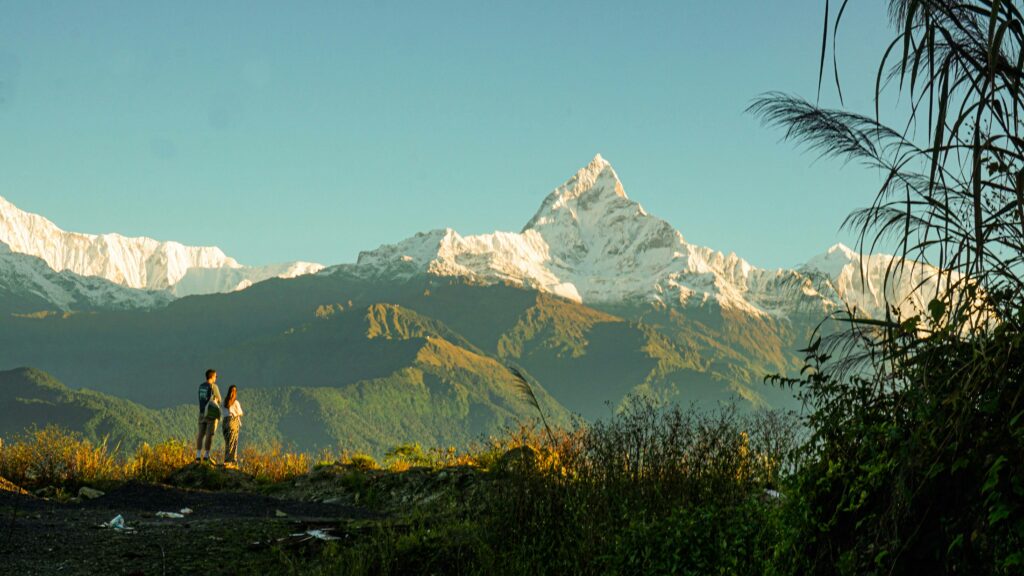
Trekking Annapurna Circuit
Trekking Annapurna Circuit Nepal: A Trekker’s Paradise
Introduction
Brief Overview of the Annapurna Circuit
Trekking Annapurna Circuit Nepal: The Annapurna Circuit is a legendary trekking route in Nepal that offers an unparalleled adventure through diverse landscapes, from lush subtropical forests to arid high-altitude deserts. Spanning approximately 160-230 kilometers (100-145 miles) depending on the route variations, this trek encircles the Annapurna Massif, providing trekkers with breathtaking views of some of the world’s highest peaks, including Annapurna I (8,091 meters) and Dhaulagiri (8,167 meters).
Importance and Popularity Among Trekkers
The Annapurna Circuit is often hailed as one of the best long-distance treks in the world. Its popularity stems from the incredible variety of scenery, the cultural richness of the region, and the challenge it presents. Trekkers can experience everything from terraced rice fields and quaint villages to alpine meadows and high mountain passes. The highlight of the trek is crossing the Thorong La Pass at 5,416 meters (17,769 feet), which is both a physical and mental triumph for many.
The trek’s accessibility and the well-established network of teahouses and lodges make it a favorite among both novice and experienced trekkers. The local communities along the route are known for their hospitality, adding a cultural dimension to the adventure. The trek also offers opportunities to visit significant religious sites, such as the Muktinath Temple, which is sacred to both Hindus and Buddhists.
Personal Anecdote or Hook to Engage Readers
Imagine this: You’re standing at the top of Thorong La Pass, the highest point of the Annapurna Circuit. The air is thin, and your breath forms little clouds in the crisp morning air. As you look around, you’re surrounded by a panorama of snow-capped peaks that seem to stretch on forever. It’s a moment of pure exhilaration and awe, one that makes every step of the challenging ascent worthwhile.
I remember my first trek on the Annapurna Circuit like it was yesterday. I had just reached Manang, a charming village nestled in the mountains, when I was invited to join a local family for dinner. We sat around a warm hearth, sharing stories and laughter over plates of steaming dal bhat (a traditional Nepali meal). It was in that cozy kitchen that I truly understood the magic of the Annapurna Circuit—not just the stunning landscapes, but the incredible people who call this place home.
Getting There
Best Time to Visit (Spring and Autumn)
The best time to embark on the Annapurna Circuit trek is during the spring (March to May) and autumn (September to November) seasons. These periods offer the most stable weather conditions, clear skies, and moderate temperatures, making the trek both enjoyable and safe. Spring brings blooming rhododendrons and lush greenery, while autumn offers crisp air and stunning mountain views. Avoid the monsoon season (June to August) due to heavy rains and potential landslides, and the winter months (December to February) when the high passes can be snowbound and extremely cold.
How to Reach the Starting Point (Kathmandu to Besisahar)
Reaching the starting point of Trekking Annapurna Circuit Nepal, Besisahar, involves a journey from Kathmandu. Here’s a step-by-step guide:
- Kathmandu to Besisahar by Bus:
- Duration: Approximately 7-8 hours.
- Cost: Around NPR 500-700 (USD 4-6) for a local bus, and NPR 1,000-1,500 (USD 8-12) for a tourist bus.
- Details: Buses to Besisahar depart from the Gongabu Bus Park in Kathmandu. It’s advisable to book your tickets a day in advance, especially during peak trekking seasons.
- Kathmandu to Besisahar by Private Vehicle:
- Duration: Approximately 6-7 hours.
- Cost: NPR 10,000-15,000 (USD 80-120) depending on the type of vehicle.
- Details: Hiring a private jeep or car offers more comfort and flexibility. You can arrange this through travel agencies in Kathmandu.
- Alternative Route via Pokhara:
- Details: Some trekkers prefer to travel to Pokhara first and then take a bus or jeep to Besisahar. This route can be more scenic and offers a chance to explore Pokhara, a popular tourist destination.
Necessary Permits and Documentation
Before you set off on your trek, you’ll need to secure a few essential permits:
- Annapurna Conservation Area Permit (ACAP):
- Cost: NPR 3,000 (USD 25) for foreign nationals.
- Where to Get It: You can obtain the ACAP at the Nepal Tourism Board office in Kathmandu or Pokhara, or at the entry points to the conservation area.
- Trekkers’ Information Management System (TIMS) Card:
- Cost: NPR 2,000 (USD 20) for individual trekkers, and NPR 1,000 (USD 10) for group trekkers.
- Where to Get It: Available at the Nepal Tourism Board office in Kathmandu or Pokhara, or through registered trekking agencies.
- Passport and Visa:
- Details: Ensure your passport is valid for at least six months from your entry date. Tourist visas can be obtained on arrival at Tribhuvan International Airport in Kathmandu or at Nepalese embassies and consulates abroad. The visa fee varies depending on the duration of stay (e.g., USD 30 for 15 days, USD 50 for 30 days).
Contact Information
- Nepal Tourism Board, Kathmandu:
- Address: Pradarshani Marg, Kathmandu 44617, Nepal
- Phone: +977-1-4256909
- Website: Nepal Tourism Board
- Nepal Tourism Board, Pokhara:
- Address: Damside, Pokhara 33700, Nepal
- Phone: +977-61-462742
- Website: Nepal Tourism Board
Embarking on Trekking Annapurna Circuit Nepal is a thrilling adventure that requires careful planning and preparation. By visiting during the optimal seasons, arranging your transportation, and securing the necessary permits, you’ll be well on your way to experiencing one of the world’s most iconic trekking routes.
Preparation and Packing
Essential Gear and Clothing
When it comes to Trekking Annapurna Circuit Nepal, packing the right gear can make or break your adventure. Here’s a comprehensive list of essentials:
- Backpack:
- Size: 40-50 liters for the trek.
- Cost: NPR 5,000-10,000 (USD 40-80).
- Tip: Look for one with a good hip belt and rain cover.
- Trekking Boots:
- Features: Waterproof, ankle support.
- Cost: NPR 10,000-20,000 (USD 80-160).
- Tip: Break them in before the trek to avoid blisters.
- Clothing Layers:
- Base Layer: Moisture-wicking shirts and thermal underwear.
- Mid Layer: Fleece jacket or down vest.
- Outer Layer: Waterproof and windproof jacket and pants.
- Cost: NPR 15,000-25,000 (USD 120-200) for all layers.
- Tip: Layering is key to adapting to changing weather conditions.
- Sleeping Bag:
- Rating: -10°C to -20°C.
- Cost: NPR 8,000-15,000 (USD 65-120).
- Tip: A good sleeping bag is crucial for cold nights at high altitudes.
- Other Essentials:
- Trekking Poles: NPR 2,000-5,000 (USD 16-40).
- Headlamp: NPR 1,500-3,000 (USD 12-24).
- Water Purification Tablets: NPR 500-1,000 (USD 4-8).
- First Aid Kit: NPR 1,000-2,000 (USD 8-16).
Physical Fitness and Training Tips
Preparing your body for Trekking Annapurna Circuit Nepal is just as important as packing the right gear. Here are some tips to get you trek-ready:
- Cardiovascular Training:
- Activities: Running, cycling, swimming.
- Frequency: 3-4 times a week.
- Tip: Aim for at least 30-45 minutes per session to build endurance.
- Strength Training:
- Focus Areas: Legs, core, and upper body.
- Exercises: Squats, lunges, planks, push-ups.
- Frequency: 2-3 times a week.
- Tip: Strong legs and core will help you handle the steep ascents and descents.
- Hiking Practice:
- Activities: Day hikes with a loaded backpack.
- Frequency: Once a week.
- Tip: Gradually increase the weight in your backpack to simulate trekking conditions.
- Flexibility and Balance:
- Activities: Yoga, stretching exercises.
- Frequency: Daily.
- Tip: Flexibility helps prevent injuries, and balance exercises improve stability on uneven terrain.
Health Precautions and Altitude Sickness Awareness
Health and safety are paramount when trekking at high altitudes. Here’s what you need to know:
- Altitude Sickness:
- Symptoms: Headache, nausea, dizziness, fatigue.
- Prevention: Acclimatize properly by taking rest days, stay hydrated, and ascend gradually.
- Medication: Diamox (consult your doctor before use).
- Hydration:
- Tip: Drink at least 3-4 liters of water daily.
- Cost: Water purification tablets or a filter can cost NPR 500-2,000 (USD 4-16).
- Nutrition:
- Tip: Eat a balanced diet with plenty of carbohydrates for energy.
- Cost: Meals at teahouses range from NPR 300-600 (USD 2.5-5) per meal.
- Vaccinations:
- Recommended: Hepatitis A and B, Typhoid, Tetanus.
- Cost: Varies by country; check with your local health provider.
- Insurance:
- Tip: Ensure your travel insurance covers high-altitude trekking and emergency evacuation.
- Cost: NPR 10,000-20,000 (USD 80-160) depending on coverage.
Contact Information
- Travel Agencies in Kathmandu:
- Himalayan Glacier Trekking:
- Address: Thamel, Kathmandu 44600, Nepal
- Phone: +977-1-4267177
- Website: Himalayan Glacier
- Himalayan Glacier Trekking:
- Local Health Clinics:
- CIWEC Clinic Travel Medicine Center:
- Address: Lazimpat, Kathmandu 44600, Nepal
- Phone: +977-1-4424111
- Website: CIWEC Clinic
- CIWEC Clinic Travel Medicine Center:
Preparing for the Trekking Annapurna Circuit Nepal involves careful planning and packing, physical training, and health precautions. By following these guidelines, you’ll be well-equipped to tackle the challenges and enjoy the breathtaking beauty of the trek.
The Trekking Route
Day 1-2: Kathmandu to Besisahar
Initial journey and first impressions
Your adventure begins in Kathmandu, the bustling capital of Nepal. From here, you’ll take a bus or a private vehicle to Besisahar, the starting point of the Trekking Annapurna Circuit Nepal. The journey takes about 7-8 hours by bus (costing around NPR 500-700 or USD 4-6) or 6-7 hours by private vehicle (costing NPR 10,000-15,000 or USD 80-120). As you leave the city behind, you’ll be greeted by the lush green hills and terraced fields of the Nepalese countryside. The excitement builds as you catch glimpses of the towering peaks that await you.
Day 3-5: Besisahar to Chame
Scenic views and cultural encounters
The trek officially kicks off from Besisahar. Over the next few days, you’ll trek through charming villages like Bhulbhule and Jagat, gradually ascending to Chame. The trail offers stunning views of waterfalls, lush forests, and terraced fields. You’ll also encounter various ethnic communities, including Gurung and Manangi people, who will warmly welcome you into their homes and teahouses. Don’t forget to try some local delicacies like dal bhat and momos!
Day 6-8: Chame to Manang
Acclimatization and exploring Manang
As you continue from Chame to Manang, the landscape changes dramatically. The lush greenery gives way to more arid and rugged terrain. Manang, situated at 3,540 meters, is a crucial acclimatization stop. Spend a couple of days here to adjust to the altitude. Explore the village, visit the Gangapurna Lake, and hike up to the Praken Gompa for a blessing from the local lama. The views of Annapurna II, III, and IV are simply breathtaking.
Day 9-11: Manang to Thorong Phedi
High-altitude trekking challenges
Leaving Manang, you’ll trek towards Thorong Phedi, the base camp for the Thorong La Pass. This section of the trek is challenging due to the increasing altitude and rugged terrain. Take it slow and steady, and make sure to stay hydrated. Along the way, you’ll pass through Yak Kharka and Letdar, where you can spot yaks grazing in the high pastures. The anticipation builds as you prepare for the highest point of the trek.
Day 12: Thorong La Pass
The highest point and breathtaking views
This is the day you’ve been waiting for! Starting early in the morning, you’ll make the strenuous ascent to Thorong La Pass, standing at 5,416 meters. The climb is tough, but the reward is worth it. From the top, you’ll be treated to panoramic views of the Annapurna and Dhaulagiri ranges. Take a moment to soak in the beauty and snap some photos before descending to Muktinath, a sacred pilgrimage site for both Hindus and Buddhists.
Day 13-15: Muktinath to Jomsom
Spiritual sites and local culture
After the exhilaration of crossing Thorong La Pass, the trek continues to Jomsom. Along the way, you’ll visit the Muktinath Temple, known for its 108 water spouts and eternal flame. The trail descends through the Kali Gandaki Valley, passing through villages like Kagbeni and Marpha, famous for its apple orchards and brandy. Enjoy the unique blend of Tibetan and Thakali cultures in this region.
Day 16-17: Jomsom to Pokhara
Relaxation and reflection
The final leg of your trek takes you from Jomsom to Pokhara. You can either trek or take a short flight (costing around USD 120) from Jomsom to Pokhara. Pokhara is a beautiful lakeside city, perfect for some well-deserved relaxation. Reflect on your incredible journey as you stroll along Phewa Lake, visit the World Peace Pagoda, or simply unwind at one of the many cafes and restaurants.
Highlights of the Trek: Trekking Annapurna Circuit Nepal
Thorong La Pass (5,416 meters)
Thorong La Pass is the crown jewel of the Annapurna Circuit, standing tall at 5,416 meters. This high-altitude pass is not just a physical challenge but a spiritual journey. The views from the top are nothing short of spectacular, offering a 360-degree panorama of the Annapurna and Dhaulagiri ranges. The sense of accomplishment upon reaching the pass is unparalleled. Remember to start early to avoid the strong winds that pick up later in the day. The trek to Thorong La Pass is demanding, so ensure you’re well-acclimatized and prepared for the altitude.
Muktinath Temple
Muktinath Temple is a sacred site for both Hindus and Buddhists, making it a unique cultural highlight of the trek. Located at an altitude of 3,710 meters, this temple is believed to grant salvation to those who visit. The temple complex includes 108 water spouts and an eternal flame that burns on natural gas. The spiritual ambiance of Muktinath, combined with the stunning backdrop of the Himalayas, makes it a must-visit. Entry to the temple is free, but donations are appreciated.
Natural Hot Springs at Tatopani
After days of trekking, the natural hot springs at Tatopani are a welcome relief. The name “Tatopani” literally means “hot water” in Nepali. These geothermal springs are perfect for soaking your tired muscles and rejuvenating your spirit. The entry fee is around NPR 100 (approximately $1), and the experience is worth every penny. The village of Tatopani also offers charming tea houses and lodges where you can rest and enjoy local cuisine.
Panoramic Views from Poon Hill
Poon Hill is famous for its breathtaking sunrise views over the Annapurna and Dhaulagiri ranges. At 3,210 meters, it’s a relatively easy climb compared to other parts of the circuit, but the rewards are immense. The early morning hike to Poon Hill is a highlight for many trekkers, offering a stunning panorama that includes some of the highest peaks in the world. The entry fee for Poon Hill is around NPR 150 (approximately $1.50), and the best time to visit is during the spring and autumn seasons.
Diverse Flora and Fauna
Trekking Annapurna Circuit Nepal is a biodiversity hotspot, home to a wide variety of flora and fauna. As you trek through different altitudes, you’ll encounter lush subtropical forests, alpine meadows, and arid landscapes. Keep an eye out for wildlife such as blue sheep, Himalayan tahr, and various bird species. The region is also rich in medicinal plants and colorful rhododendron forests, especially vibrant during the spring season.
Cultural Experiences: Trekking Annapurna Circuit Nepal
Interactions with Local Communities
One of the most enriching aspects of trekking the Annapurna Circuit is the opportunity to interact with the local communities. The trail passes through villages inhabited by diverse ethnic groups such as the Gurung, Thakali, and Manangba. Each community has its own unique traditions, languages, and architectural styles.
As you trek, you’ll be greeted with warm smiles and genuine hospitality. Don’t be surprised if you’re invited into a local home for a cup of tea or a meal. These interactions provide a deep insight into the daily lives of the people who call this rugged landscape home. Engaging with locals not only enhances your cultural understanding but also supports the local economy.
Traditional Nepali Cuisine
Food is a significant part of the cultural experience on the Annapurna Circuit. Traditional Nepali cuisine is hearty and flavorful, perfect for fueling your trek. Dal Bhat, a staple dish consisting of lentil soup, rice, and vegetables, is a must-try. It’s not just a meal but a cultural experience, often accompanied by a variety of pickles and curries.
Another popular dish is momo, Nepali dumplings filled with meat or vegetables, served with a spicy dipping sauce. You can find these delicacies in tea houses and lodges along the trek. Prices for meals range from NPR 300-600 (approximately $3-$6), depending on the location and the dish.
Festivals and Local Traditions
Timing your trek to coincide with local festivals can add an extra layer of cultural immersion. Major festivals like Dashain and Tihar are celebrated with great enthusiasm. Dashain, the longest and most significant Hindu festival in Nepal, involves family gatherings, animal sacrifices, and the worship of the goddess Durga. Tihar, also known as the festival of lights, is celebrated with colorful decorations, oil lamps, and the worship of animals like crows, dogs, and cows.
Participating in these festivals allows you to witness traditional music, dance, and rituals. It’s a vibrant and joyous time, offering a unique glimpse into the cultural fabric of Nepal.
Challenges and Rewards: Trekking Annapurna Circuit Nepal
Physical and Mental Challenges
Trekking the Annapurna Circuit is no walk in the park. It’s a demanding journey that tests both your physical stamina and mental resilience. The trek spans approximately 160-260 kilometers, depending on the route you take, and involves long days of walking, often 6-8 hours a day. The terrain is diverse, ranging from lush subtropical forests to arid high-altitude landscapes, and includes steep ascents and descents.
One of the most significant challenges is the altitude. The trek reaches its highest point at Thorong La Pass, standing at 5,416 meters. At such altitudes, the air is thin, and altitude sickness is a real concern. Symptoms can include headaches, nausea, and dizziness. Proper acclimatization is crucial, and it’s recommended to take rest days, especially in places like Manang, to allow your body to adjust.
Mentally, the trek can be equally challenging. The isolation, the physical exertion, and the unpredictable weather can take a toll. However, the sense of camaraderie among trekkers and the support from local guides and porters can be incredibly uplifting. Remember, it’s okay to take it slow and listen to your body.
Personal Growth and Achievements
Completing the Annapurna Circuit is a monumental achievement. It’s not just about reaching Thorong La Pass or covering the distance; it’s about the journey and the personal growth that comes with it. Many trekkers find that the challenges they face on the trail help them discover inner strengths they didn’t know they had.
The trek offers ample opportunities for self-reflection. The serene landscapes, the simplicity of life in the mountains, and the break from modern distractions allow you to connect with yourself on a deeper level. By the end of the trek, many find a renewed sense of purpose and a greater appreciation for the simple things in life.
Memorable Moments and Takeaways
The Annapurna Circuit is filled with unforgettable moments. Whether it’s the first glimpse of the snow-capped peaks, the warmth of a cup of tea in a remote tea house, or the breathtaking sunrise from Poon Hill, these experiences stay with you long after the trek is over.
One of the most memorable moments for many trekkers is crossing Thorong La Pass. The sense of accomplishment, the stunning views, and the sheer joy of having made it to the top are indescribable. Another highlight is the cultural immersion. Interacting with local communities, participating in their festivals, and tasting traditional Nepali cuisine add a rich cultural dimension to the trek.
Conclusion: Trekking Annapurna Circuit
Recap of the Experience
Trekking Annapurna Circuit Nepal is an adventure that combines breathtaking landscapes, rich cultural experiences, and personal challenges. From the lush subtropical forests at the start of the trek to the arid, high-altitude terrain of Thorong La Pass, every step offers something new and awe-inspiring. The journey takes you through charming villages, past sacred temples like Muktinath, and across diverse ecosystems teeming with flora and fauna. Along the way, you’ll meet friendly locals, savor traditional Nepali cuisine, and perhaps even participate in vibrant festivals. It’s a trek that tests your physical endurance and mental resilience, but the rewards are immense.
Encouragement for Readers to Embark on the Trek
If you’re considering trekking Annapurna Circuit Nepal, let me give you a nudge in the right direction: Go for it! This trek is a once-in-a-lifetime experience that will leave you with memories to cherish forever. Whether you’re an experienced trekker or a novice looking for a challenge, the Annapurna Circuit has something for everyone. The sense of accomplishment you’ll feel when you reach Thorong La Pass, the joy of interacting with local communities, and the sheer beauty of the Himalayas are worth every step. Plus, you’ll come back with some great stories to tell and maybe even a few new friends.
Final Thoughts and Personal Reflections
Reflecting on my own experience trekking Annapurna Circuit Nepal, I can say it was one of the most rewarding adventures of my life. The physical challenges pushed me to my limits, but they also helped me discover inner strengths I didn’t know I had. The cultural experiences enriched my understanding of Nepal and its people, and the natural beauty left me in awe every single day.
One of my favorite moments was soaking in the hot springs at Tatopani after a long day of trekking. It was a simple pleasure, but it felt like pure luxury. Another highlight was the sunrise from Poon Hill, where the first light of day illuminated the snow-capped peaks in a breathtaking display. These moments, along with many others, made the trek an unforgettable journey.
So, if you’re ready for an adventure that will challenge you, inspire you, and leave you with a deep appreciation for the natural world and the cultures that inhabit it, then trekking Annapurna Circuit Nepal is the perfect choice. Pack your bags, lace up your boots, and get ready for an experience that will stay with you forever.
For More Such Articles – CLICK HERE
(Image Credit: Title Image – Photo by Anja Lee Ming Becker on Unsplash | 1st Image – Photo by Mamun Srizon on Unsplash | 2nd Image – Photo by Simon English on Unsplash | 3rd Image – Photo by Simon English on Unsplash | 4th Image – Photo by Sanjay Hona on Unsplash | 5th Image – Photo by Neha Maheen Mahfin on Unsplash | 6th Image – Photo by Neha Maheen Mahfin on Unsplash | 7th Image – Photo by Sylwia Bartyzel on Unsplash)


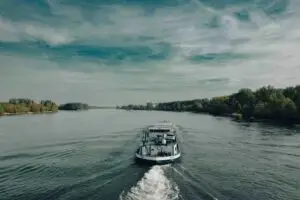

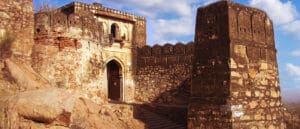
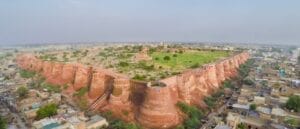
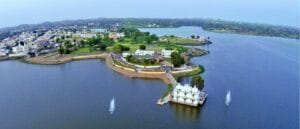

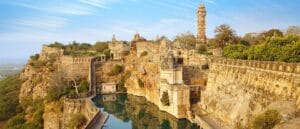
I don’t think the title of your article matches the content lol. Just kidding, mainly because I had some doubts after reading the article.
Thanks for sharing. I read many of your blog posts, cool, your blog is very good.
Your article helped me a lot, is there any more related content? Thanks!
Your article helped me a lot, is there any more related content? Thanks!
Thank you for your sharing. I am worried that I lack creative ideas. It is your article that makes me full of hope. Thank you. But, I have a question, can you help me?
Your point of view caught my eye and was very interesting. Thanks. I have a question for you.
Thanks for sharing. I read many of your blog posts, cool, your blog is very good.
Can you be more specific about the content of your article? After reading it, I still have some doubts. Hope you can help me.
Thanks for sharing. I read many of your blog posts, cool, your blog is very good.
I am truly thankful to the owner of this web site who has shared this fantastic piece of writing at at this place.
For the reason that the admin of this site is working, no uncertainty very quickly it will be renowned, due to its quality contents.